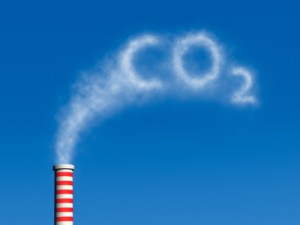By Tom Ranken, WCTA President.
June 2, 2014 (Washington, DC) – The Administration announced what the New York Times called “one of the strongest actions ever taken by the U.S. government to fight climate change.” The proposed guidelines will, for the first time, cut carbon pollution from existing power plants, which is the single largest source of carbon in the United States. Speaking on a BusinessForward conference call, John Podesta, Counselor to the President, called this a “big day for the administration in rolling out the new guidelines.”
There is a 120-day comment period (See how to comment below).
“Today, climate change—fueled by carbon pollution—supercharges risks not just to our health, but to our communities, our economy, and our way of life,” commented EPA Administrator Gina McCarthy, who visited Seattle in May.
 In 2009, the EPA determined that greenhouse gas pollution threatens Americans’ health and welfare by leading to long lasting changes in climate that can have a range of negative effects on human health and the environment. In the BusinessForward conference call, Mr. Podesta cited a range of increasing harm from climate change including damage to the economy from severe weather events including delayed housing starts and reduced consumer demand. He cited asthma, droughts, hurricanes, and record heat waves as among the costs. Climate change damage far exceeds the costs that the new plan will require, he said. Mr. Podesta said the net impacts of the new guidelines would be net very positive for the economy.
In 2009, the EPA determined that greenhouse gas pollution threatens Americans’ health and welfare by leading to long lasting changes in climate that can have a range of negative effects on human health and the environment. In the BusinessForward conference call, Mr. Podesta cited a range of increasing harm from climate change including damage to the economy from severe weather events including delayed housing starts and reduced consumer demand. He cited asthma, droughts, hurricanes, and record heat waves as among the costs. Climate change damage far exceeds the costs that the new plan will require, he said. Mr. Podesta said the net impacts of the new guidelines would be net very positive for the economy.
According to the EPA, The Clean Power Plan will be implemented through a state-federal partnership under which states identify a path forward using either current or new electricity production and pollution control policies to meet the goals of the proposed program. The proposal provides guidelines for states to develop plans to meet state-specific goals to reduce carbon pollution and gives them the flexibility to design a program that makes the most sense for their unique situation. States can choose the right mix of generation using diverse fuels, energy efficiency, and demand-side management to meet the goals and their own needs. It allows them to work alone to develop individual plans or to work together with other states to develop multi-state plans.
According to Mr. Podesta, the states that are most proactive will see greatest benefits including more jobs. There will be strong net benefits, he said, and he predicted tens of thousands of new jobs created under the plan.
States will have great flexibility in putting together their plans to meet the new EPA standards. They will have “maximum flexibility” to create plans that maximize individual circumstances. “The real work,” Mr. Podesta said, “will be done on the state level.”
By 2030, the EPA says the guidelines will:
- Cut carbon emission from the power sector by 30 percent nationwide below 2005 levels, which is equal to the emissions from powering more than half the homes in the United States for one year;
- Cut particle pollution, nitrogen oxides, and sulfur dioxide by more than 25 percent as a co-benefit;
- Avoid up to 6,600 premature deaths, up to 150,000 asthma attacks in children, and up to 490,000 missed work or school days—providing up to $93 billion in climate and public health benefits; and
- Shrink electricity bills roughly 8 percent by increasing energy efficiency and reducing demand in the electricity system.
The New York Times said that “The regulation is likely to stand as President Obama’s last chance to substantially shape domestic policy and as a defining element of his legacy. The president, who failed to push a sweeping climate change bill through Congress in his first term, is now acting on his own by using his executive authority under the 1970 Clean Air Act to issue the regulation.”
How to Comment on the Clean Power Plan Proposed Rule (120-Day Comment Period)
Comments can be submitted at public hearings or in writing.
Public Hearings: EPA will hold four public hearings on the proposed Clean Power Plan the week of July 28, 2014 . Learn more. The hearings will be held in Atlanta, GA, Denver, CO, Pittsburgh, PA, and Washington, DC.
In Writing: Comments on the proposed Clean Power Plan for existing power plants must reference Docket ID: EPA-HQ-OAR-2013-0602. Comments may be submitted by one of the following methods:
- Submit a comment using this online form.
- Fax: Fax your comments to: 202-566-9744.
- Mail: Environmental Protection Agency, EPA Docket Center (EPA/DC), Mailcode 28221T, Attention Docket ID No. OAR–2013-0602, 1200 Pennsylvania Avenue, NW, Washington, DC 20460.
- Hand Delivery or Courier: Deliver your comments to: EPA Docket Center, Room 3334, 1301 Constitution Ave., NW, Washington, DC, 20460. Such deliveries are only accepted during the Docket’s normal hours of operation, and special arrangements should be made for deliveries of boxed information.
More Information: